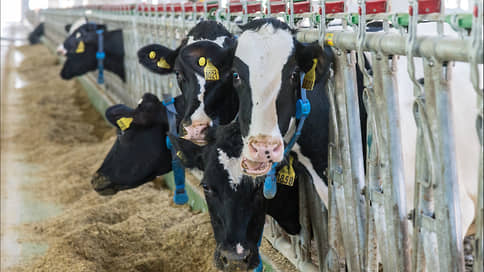Milkmen will not be added to feed – Newspaper Kommersant No. 197 (7398) of 10/24/2022
[ad_1]

The program to subsidize part of the cost of purchasing feed for dairy farms, which began in 2021, will not be extended. The Ministry of Agriculture decided to abandon this measure due to low grain prices in the domestic market. Milk producers point out that the refusal of the subsidy threatens to reduce the number of livestock, and the costs of farm operators are only growing due to the rise in the cost of equipment and veterinary drugs.
In 2022, the Ministry of Agriculture does not plan to reimburse raw milk producers for part of the cost of purchasing feed due to low grain prices, two sources told Kommersant on the market. In 2021, 10 billion rubles were allocated for this measure. Dairy farm operators could recover up to 50% of the cost per ton of feed. Earlier, the Ministry of Agriculture considered the possibility support extensions with an increase in the volume of subsidies to 15 billion rubles. and linking the measure to the level of farm productivity (see Kommersant of June 29).
The Ministry of Agriculture confirmed to Kommersant that they do not plan to allocate funds under this subsidy. They said the measure was initially a one-off and was driven by the risk of feed shortages due to adverse weather conditions last year. Now the Ministry of Agriculture is recording an increase in feed production, and their prices make it possible to ensure profitability in animal husbandry.
Domestic grain prices have indeed declined this season on the back of a record harvest and low export rates. According to the Ministry of Agriculture, as of October 19, 147.5 million tons of grain in bunker weight were collected in Russia, and the ministry expects to reach the figure of 150 million tons. According to the results of July-September, Sovecon estimated wheat export at 10.2 million tons, which is 22% less year-on-year. Andrey Sizov, director of Sovecon, says that grain on the domestic market is on average 20% cheaper than a year ago. As of October 19, fodder wheat cost an average of 9.7 thousand rubles. per ton, barley – 9.3 thousand rubles. per ton, corn – 10.4 thousand rubles. per ton, follows from the data of Sovecon.
But the grain of this year’s crop will be massively supplied to the market in the form of feed only in November-December, and now the farms are partially working on last year’s feed, which was purchased at a higher price, a Kommersant source in one of the milk producers explains. According to him, the lack of subsidies in these conditions may threaten to reduce the number of livestock, which has become one of the reasons for concern of the Ministry of Agriculture in 2021. According to the analytical center Milknews, for the year, by the beginning of September 2022, the number of cows in all farms decreased by 1.3%, to 7.83 million heads.
Andrey Neduzhko, CEO of the Steppe agricultural holding (part of AFK Sistema), says that it is impossible even for large and efficient companies to maintain high production volumes without state support. According to a Kommersant source in the industry, the cost of feed compared to last year remained at about the same level, while the cost of purchasing agricultural machinery and veterinary drugs rose sharply. An interlocutor of Kommersant in one of the manufacturers says that his company plans to increase the efficiency of purchasing feed components in order to compensate for the loss of support measures.
Director of the National Union of Milk Producers (Soyuzmoloko) Artem Belov notes that the increase in the cost, which has been observed in the sector in recent years, has largely stopped by this autumn. In addition, the cost of some types of feed has fallen significantly, which also has a positive impact on profitability, he says. The head of Streda Consulting, Alexei Gruzdev, adds that the decrease in livestock is compensated by an increase in productivity and the modernization of dairy farms. The industry was also helped by a significant increase in milk prices at the beginning of the year, which helped offset the increase in costs, the expert points out. As follows from the materials of Soyuzmolok, over the year, by September, the average cost of commercial milk increased by 24.2%, to 33.2 rubles. for 1 kg.
Andrei Sizov notes that the cost of feed in the dairy industry is less dependent on grain prices than, for example, in poultry farming. In addition, he adds, the negative situation with the incomes of the population threatens to reduce demand for dairy products.
[ad_2]
Source link





